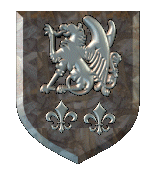
"The Enchantment of the Number Three"
by Susan BoslerEmail: morgan@iswest.com

From the Druid or Celtic Shamanistic viewpoint the number three represents the different views
one might develop following an initiation ceremony. Celtic Shamans believed that they could see
the present, past and future - their vision of the world was complete and trustworthy. The
Shaman often saw himself as a man standing in three different worlds at the same time. In this
way, his judgments, decisions and advice became infallible and was closed to interpretation.
To the Celtic Shaman the worlds overlapped thus his consciousness is different from anyone else.
His world view is full and complete. He has many ongoing relationships with otherworldly
entities, such as fairies, the dead and the yet to be born. He gains his knowledge of this world
from these entities and bestows it upon those who are not so blessed with such insight, such as
King Arthur.
The Celtic preoccupation with the number three can be seen in the image of many of the Celtic
Gods and Goddesses such as the three Brigids, and in the course of a story, often male heros
travel in groups of three in an attempt to complete a task, each of the three completing a different
leg of the journey.
Just as night and day need twilight or dawn to go between it, the Celtic Shaman is the necessary
third being between what is seen and unseen. He is neither this nor that. This widespread interest
of the number three remains in our thinking today. Many modern concepts in philosophy,
mathematics, physics, etc., are still very much based in the idea of "the three."